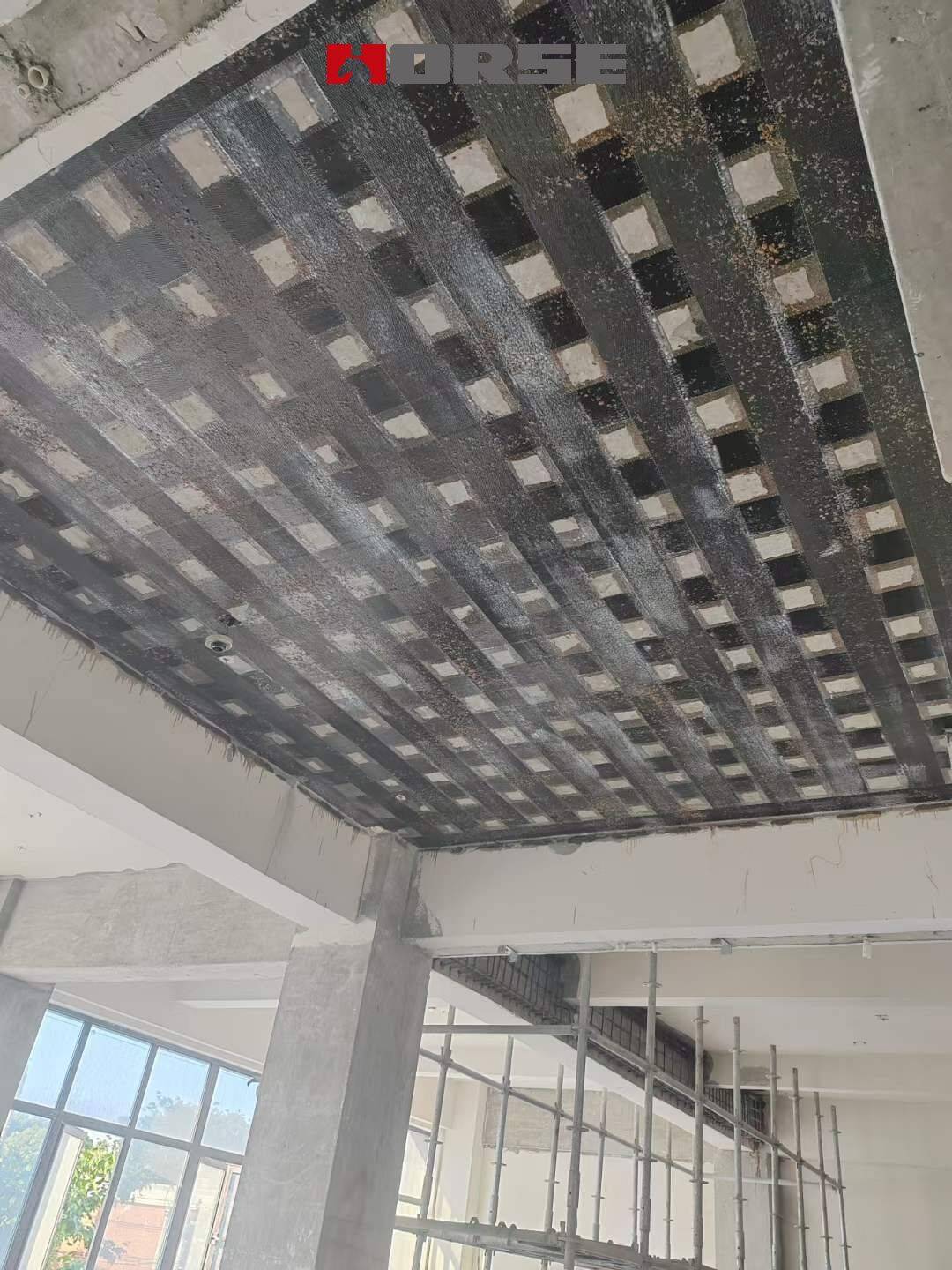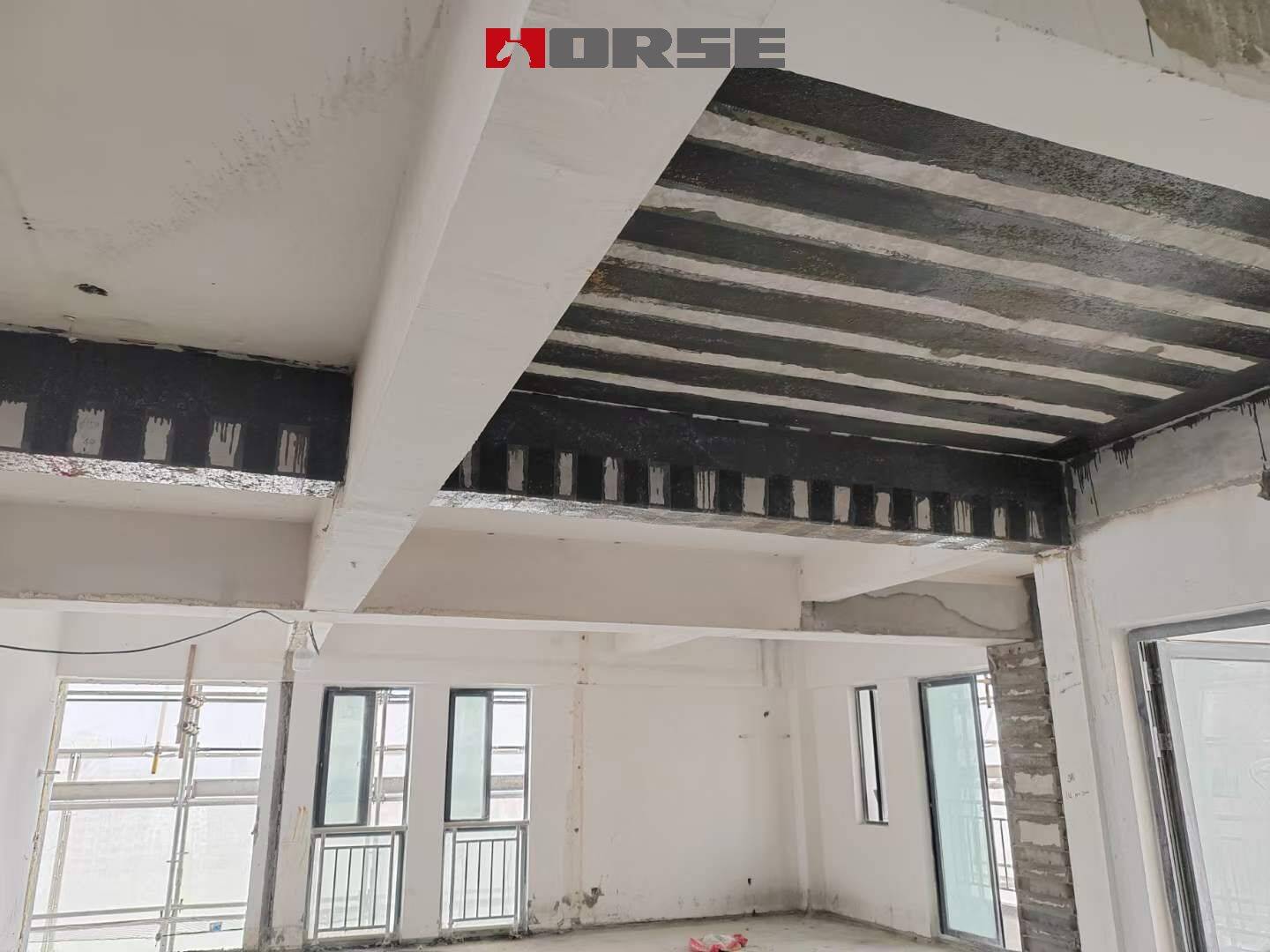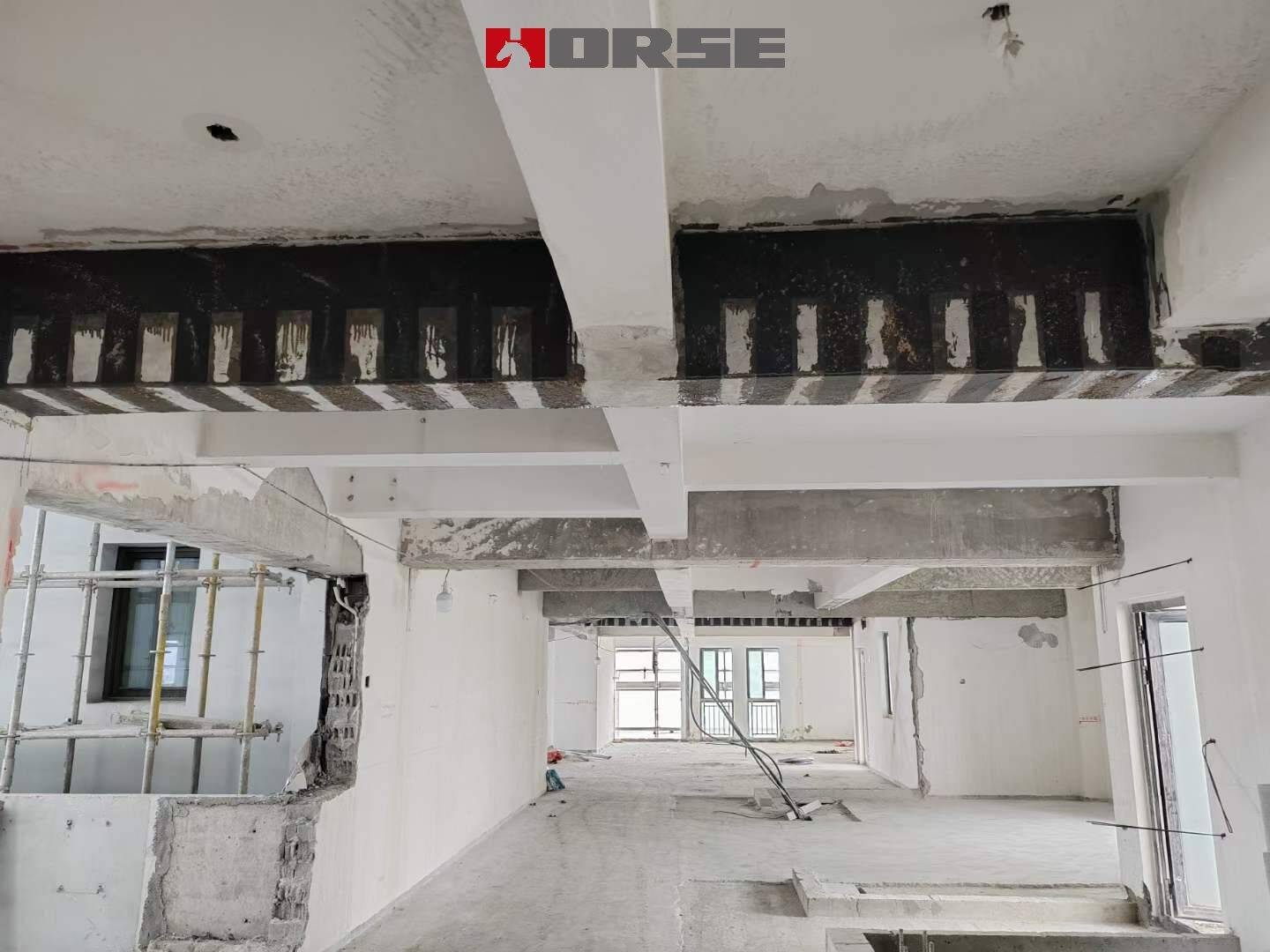Seismic Reinforcement of a R.C. School Structure
Carbon Fiber
Seismic Reinforcement of a R.C. School Structure with Carbon Fiber



Structural Analysis: The existing R.C. structure is assessed to understand its current condition and seismic vulnerability. This includes evaluating the building's design, materials, and the expected seismic loads based on the local seismicity.
Identification of Weak Points: Areas of the structure that are likely to fail or suffer significant damage during an earthquake, such as columns, beams, and joints, are identified.
Material Selection: CFRP sheets, plates, or fabrics are selected based on the specific requirements of the structure. The properties of carbon fiber, such as tensile strength, modulus of elasticity, and bonding capabilities, are considered.
Reinforcement Layout: A detailed plan is developed to specify where and how the CFRP will be applied. This may include wrapping columns, strengthening beams, or reinforcing joints.
Load Calculations: Engineers calculate the additional load-carrying capacity that the CFRP will provide, ensuring it meets or exceeds the required seismic performance standards.
Cleaning and Repair: The surfaces of the R.C. elements that will be reinforced are cleaned of dirt, grease, and loose material. Any cracks or damage are repaired to ensure proper bonding of the CFRP.
Surface Profiling: The concrete surface is roughened to enhance the adhesion between the concrete and the CFRP.
Primer Application: A primer is applied to the prepared concrete surface to improve the bond between the concrete and the epoxy resin used to adhere the CFRP.
Epoxy Resin Application: A layer of epoxy resin is applied over the primer.
Placement of CFRP Sheets: The CFRP sheets or fabrics are then carefully placed onto the epoxy-coated surface, ensuring there are no air bubbles or wrinkles.
Additional Layers: Multiple layers of CFRP may be applied, depending on the design requirements, with each layer being saturated with epoxy resin.
Curing: The epoxy resin is allowed to cure, forming a strong bond between the CFRP and the concrete.
Quality Control: The completed reinforcement is inspected for defects such as incomplete bonding, air voids, or misalignment of the CFRP sheets. Non-destructive testing methods may be used to verify the quality of the reinforcement.
Post-Reinforcement Testing: The structure may be tested to ensure that the seismic reinforcement has met the desired performance criteria. This could include load tests or dynamic analysis to simulate seismic conditions.
Monitoring: After reinforcement, the structure may be monitored over time to assess its performance during actual seismic events.